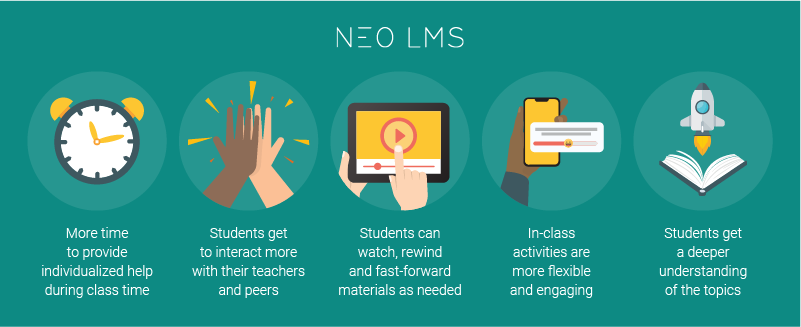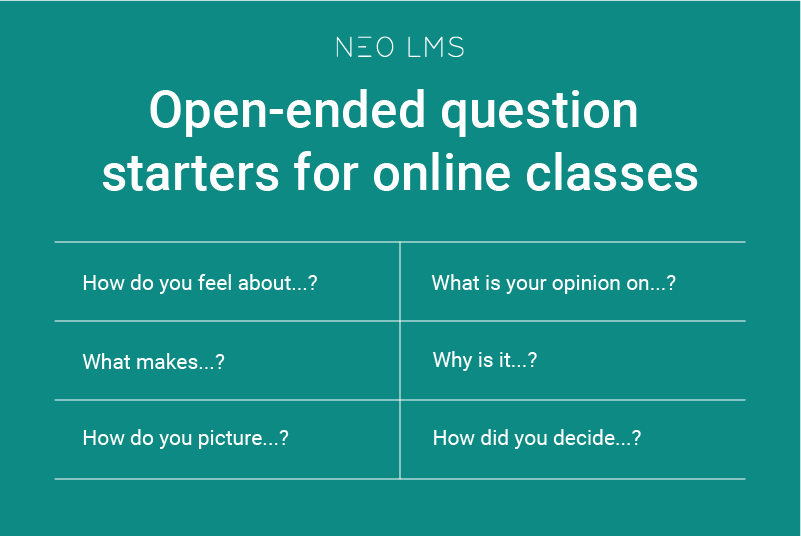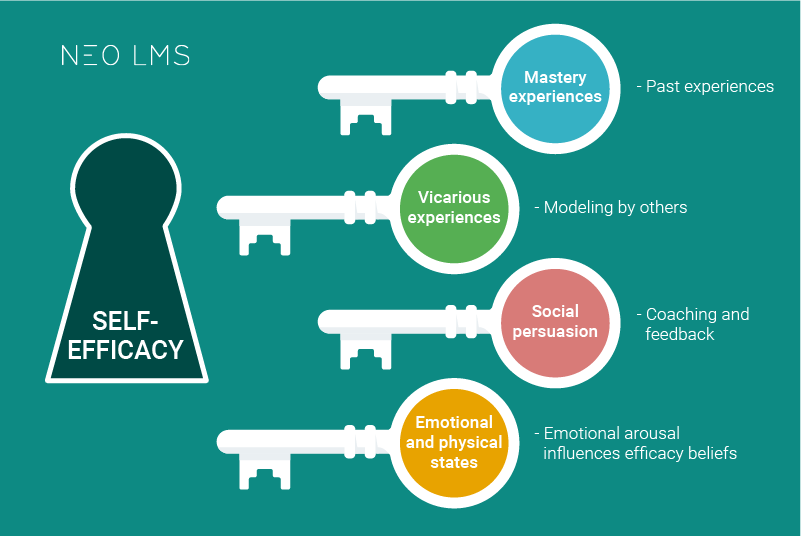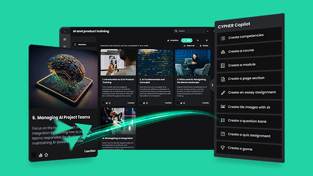Teachers want their students to be confident in their ability to reach their goals. The concept that best describes this confidence is student self-efficacy. Students with higher levels of self-efficacy are very likely to remain motivated even when faced with difficult situations.
As an educator, you need to find the best ways to increase student self-efficacy and implement those strategies in your classes. Today, most teachers are more comfortable with online education. And hybrid teaching will remain an important component of the schooling system. So, it’s essential to research what makes students thrive in online education.
On top of that, it’s also important to be aware of self-efficacy’s benefits for students, which are:
- Achieve their goals more easily
- Recover more quickly from failure
- Challenge themselves all the time
- Self-evaluate based on competency
- Develop the ability to plan for future goals
- Be more successful in the future, in any career path
Why is self-efficacy important in online education?
Scientists have researched the concept of self-efficacy in online environments. They looked into computer self-efficacy, internet self-efficacy, learning management systems (LMSs) self-efficacy, and more.
In this article, I’m going to focus on internet self-efficacy. This concept refers to learners’ confidence in finding the information they’re interested in via the web. Back in 2007, a study found out that there is a positive relationship between student satisfaction and internet self-efficacy.
Additionally, Tang and Tseng conducted a meta-analysis of 81 scientific texts related to this concept. They concluded that students who are more versed in online research have greater self-efficacy in online learning. Also, they are more skilled when using that information in remote learning. In other words, students who believe in their ability to achieve good results are more successful when learning online.
8 strategies to improve student self-efficacy
There are a few strategies you can use in your online classes to improve students’ self-efficacy. There is no recipe for success. However, trial and error lead to what works best for your class:
1. Flip your remote classroom
The flipped classroom is one of the best methods you can use to build self-efficacy and promote learning engagement. For example, students explore class elements or complete a digital class in their own time through your institution’s LMS. You can prepare written lessons, videos or learning paths. Then, trust students to learn at their own pace.
Once they understand basic concepts, you can use in-class time to engage students and assess their understanding. In other words, in-class time is when they apply and elaborate on those concepts.
There are specific ways to go about this. You can use the standard model that implies uploading pre-recorded videos in the LMS. Then, spend class time to solve problems interactively. Alternatively, you can flip a few classes at first. You can choose the schedule or ask students directly what they prefer. No matter the option, there are several benefits, including:
 The flipped classroom is one of the first methods you can use to build self-efficacy and promote learning engagement.
The flipped classroom is one of the first methods you can use to build self-efficacy and promote learning engagement.
2. Ask open-ended questions
A good thing about open-ended questions is that they work for students of all ages. Also, you can use them when teaching math, arts, history, and generally any other subject. Besides giving you a break from the monotony of “teacher talks,” they also stimulate critical thinking.
Not everyone will engage right away, but you can always start slow. For example, ask a few open-ended questions during a live session on Zoom or in specific groups created in the LMS.
Some students get excited to answer questions on the spot. Yet, it’s always good to give them a chance to reflect before coming up with an answer. This strategy boosts their self-efficacy and helps them develop their reflexive thinking.
Another reason for asking open-ended questions is that they often lead to meaningful interactions. Not only is this an excellent way to connect with your students even though you’re not physically present in the same room. But it also helps you understand how they think and where they might be struggling.
 Asking open-ended questions boosts student self-efficacy and helps them develop their reflexive thinking.
Asking open-ended questions boosts student self-efficacy and helps them develop their reflexive thinking.
Read more: The gains and pains of the think-pair-share strategy
3. Use peer modeling
There is no doubt that your students perceive you as a role model. However, most of them believe that they’ll never attain your level of competence. Therefore, it’s better to promote peer modeling in your online classroom. As the self-efficacy theory tells us, vicarious learning is already happening all the time. So, why not try to use it in the classroom intentionally?
You need to be careful when picking your peer models, though. It might be tempting to pick students who are always prepared with the best answers. However, role models can also be the students who make mistakes and doubt their skills. When that happens, you support their work, and they complete their task successfully. These students can later talk about how they overcame failure and achieved mastery.
Peer modeling doesn’t have to happen only at a class level. It can also happen in smaller groups. Carefully pick students who lack confidence. Afterward, match them with peers who can cope with tasks and are willing to show others how to do that. Your “model” students will encourage students who doubt themselves.
Read more: 3 Before Me: A Teaching method that boosts student independence and raises team players
4. Encourage mastery experiences
Albert Bandura has defined the four sources of influence for developing self-efficacy beliefs: mastery experiences, vicarious experiences, social persuasion, and emotional and physical states.
A mastery experience is a personal experience of success. In other words, students will gain more experience as they progress through tasks and if these experiences are positive enough (or they think of them as being positive), they’ll gain more confidence in their ability to solve tasks.
For example, you can prepare clear tasks for them in the first days of class so they’ll quickly gain a sense of progress For example, you can ask them to post a short introduction talking about themselves (two-three lines) and give rewards for that. This particular task will help them get used to the school LMS.
Once they do that, it’s your turn to respond to each of their contributions positively. This can take place in a classroom forum. Getting a positive reaction from you as a first interaction gives them an initial feeling of success. Then, they’ll be more likely to contribute in the future.
 Students gain more experience as they progress through tasks and grow more confident in their ability to solve tasks in the future.
Students gain more experience as they progress through tasks and grow more confident in their ability to solve tasks in the future.
5. Build a sense of community
In a virtual classroom, it’s vital for students to feel part of a community, no matter their grade level. Fortunately, real-time communication in groups or via online learning platforms makes it easy to provide a sense of community for your students.
Just as indicated in Nagel, Blignaut, and Cronje’s research, online students feel part of a community when interacting in a forum discussion or reading replies. To ensure that interaction occurs, either you or a teaching assistant should establish behavioral norms for online communication and model them. For instance, students need to ask questions that require higher-order thinking.
Another idea is to have “relaxed” sessions every once in a while. Hence, students can interact and share their passions, recommendations, and more. This creates a more relaxed environment in the long run and makes your classes more engaging.
6. Be present for your students
When teaching in-person, you can sense right away if students feel anxious, confused, or nervous. However, this is harder to achieve during online teaching. Most of the time, you’re not there when your students complete their tasks. Therefore, you can’t see if they experience emotional distress.
In this case, you can take a proactive approach and help decrease feelings of anxiety and stress. Psychological factors directly impact self-efficacy. Thus, it’s good to be present and get real-time feedback about how students feel.
Make a habit of identifying students who might feel anxious at the start of the lesson. Then, try to ease their anxiety and see how comfortable they are with the learning materials. Provide clear assessment instructions or add supporting examples for a positive mood in the online classroom. Students feel more comfortable asking questions when they feel safe.
7. Give positive feedback
Positive feedback can influence students' perceived self-efficacy while enhancing their performance.
Giving positive feedback in classes motivates students and improves the overall learning experience compared to negative feedback. The good thing about learning platforms is that you can often include a personalized message when giving feedback. By using an LMS, you save time on grading work. So, you can later use it to either send a written message or a voice recording.
A good example are audio/video assignments. For example, you ask your students to submit an audio recording summarizing a book they’ve read. Afterward, you respond in the same manner. Besides being a more personal interaction, it’s also a good way to get to know your students.
8. Develop your self-efficacy
As a teacher, you need to be aware that you’re in control. Are you confident in your ability to teach and show a high level of teacher self-efficacy? Then, you’re going to influence your students’ confidence levels no matter the subject you’re teaching.
You might remember from your school years those teachers who would always tell anecdotes about their life. Their stories were inspiring – a good way to learn more and connect. Tell stories about how you overcame a setback and encourage students to do the same. Sometimes leading by example can have a significant impact on your students.
Besides motivating students, you’ll also provide a sense of well-being in the online learning environment.
Wrapping up
Student self-efficacy is an essential component of online learning. To increase your students’ self-efficacy, you need to try new methods. Flip your classroom and help students better understand the topic. Provide effective feedback in the school LMS or build a sense of community where everyone feels comfortable speaking up. All these strategies will come in handy.







